The Great Barrier Reef
Today we visited the Great Barrier Reef (GBR) another Natural Wonder of the World. This beautiful reef is the largest living organism on earth and can actually be seen from outer space.
I say “today”, but the truth is, we’ve been navigating out way over the reef for three days. The 20-million-year-old GBR is the size of Italy. At 2,300 kilometers (1,400 miles) long and it made up of hundreds of islands and thousands of individual reefs.
While there are 6,000 species of coral, the GBR is made up of 400 different types of coral. I know, you are probably wondering if coral is an animal, vegetable, or mineral. While some biologist champion that coral is both an animal and a plant, according to NOAA, Coral is a “sessile animal, which relies on its relationship with plant-like algae” which are photosynthetic cells that live in their tissues.
Others say that the two organisms are so closely intertwined that some believe that there is an argument to be made that coral is both and animal and a plant.
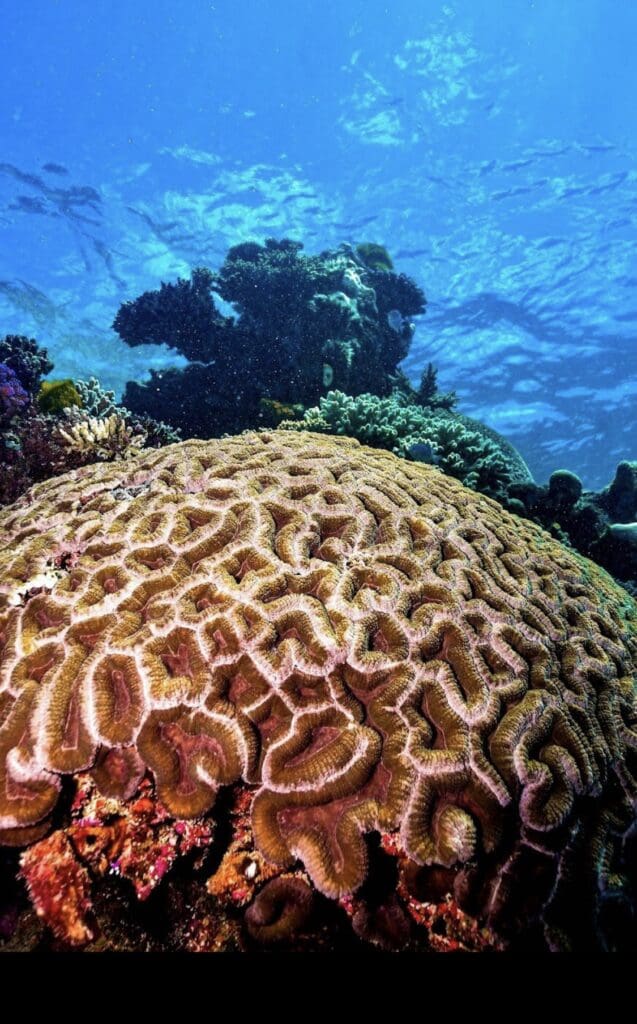
Coral is vulnerable, and can be killed by many things including pollution, predatory fish, and temperature changes. Coral “bleaching” is a natural occurrence caused when water temperatures become too warm. When this happens, coral expels the algae from their tissue, turning the coral bone white. The coral can survive this, providing that the ocean temperatures lower back down to an acceptable temperature within a ~2 week period. While this is a natural occurrence, obviously, global warming may be increasing the frequencies of these occurrences.
Some coral bleaching (as well as the elevated risk of sunburn, cancer, etc.) can be attributed to ongoing issue with a hole in the ozone layer, which unfortunately is primarily located above Australia. (You may recall when aerosol sprays were banned some 30 years ago.) The hole is cyclical (reoccurring every October) and although, at its peak, it was 3 times larger than Australia, it is gradually getting better. (i.e. If we’re lucky, in another 100 years, it will be like it never happened…)
🙁
Being out of the water can also kill coral. Some of the GBR is located just below the waterline and is exposed to air daily during the low tide. When this happens, the coral protects itself by secreting a mucus which acts as a natural sunscreen and prevents the coral from drying out. Coral can fully recover from this scenario, providing the tide comes back in and re-submerges the it within a few hours.
Perhaps the biggest killers of coral comes in the form of cyclones, which can physically damage large portions of reefs, and take years to regrow. However, techniques have been developed that expedite the regrowth of damage reefs. These processes were used extensively to recover from 2011 Cyclone Yazi which caused extensive damage to the GBR.
Today’s adventure took us to the Reef Magic Pontoon, which is anchored adjacent to a portion of the GBR just off the coast of Cairns, AU.
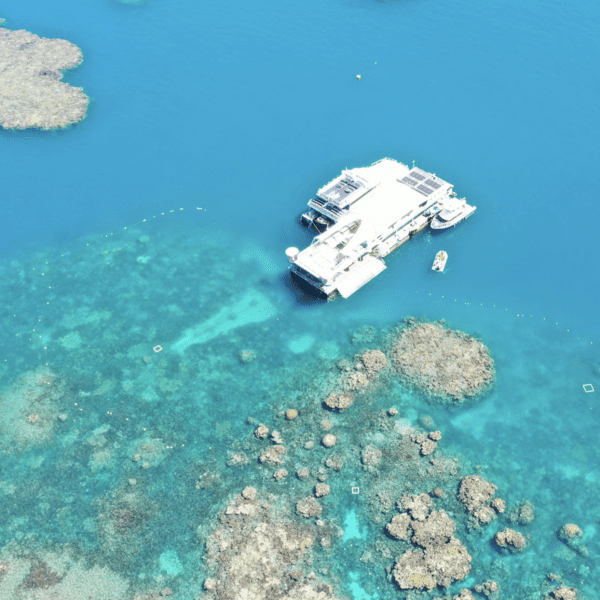
This place is cool. A one-and-a-half hour caterman trip got us to the covered platform, which is kind of like a combination restaurant, dock, observation, and learning center, with a built-in dive shop.
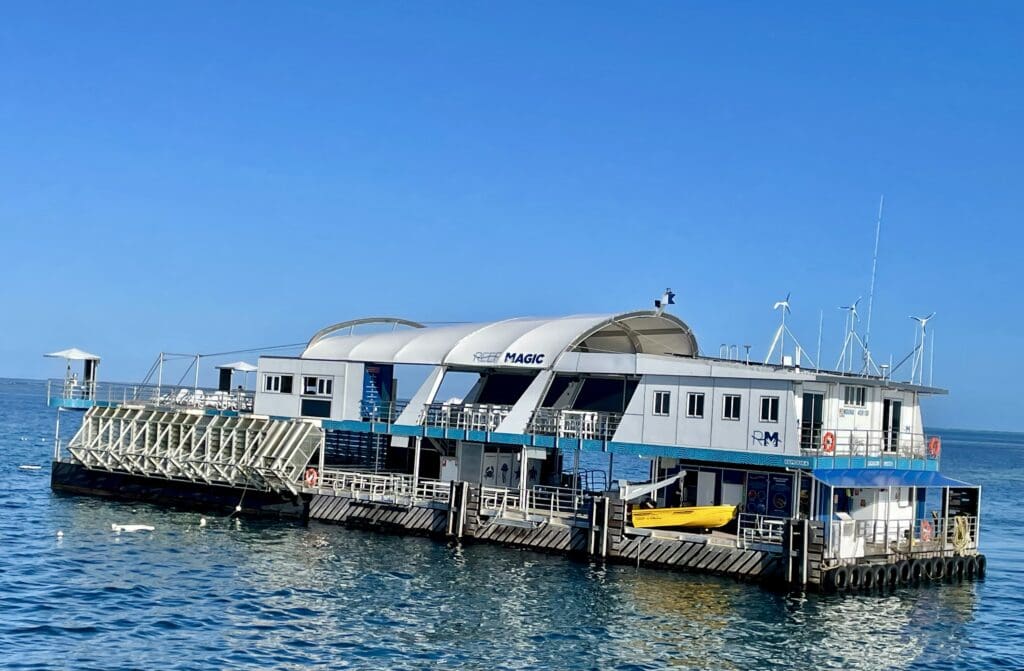
From here we went to their underwater glass-room basement, and we were able to sit and observed the coral and the fish at our leisure. We also took several trips on their glass bottom boats, and their submersibles, which are similar to submariners, but they are really boats with a all-glass basement. This works out well, because the coral and fish are just below the surface in this portion of the reef. The views were outstanding.
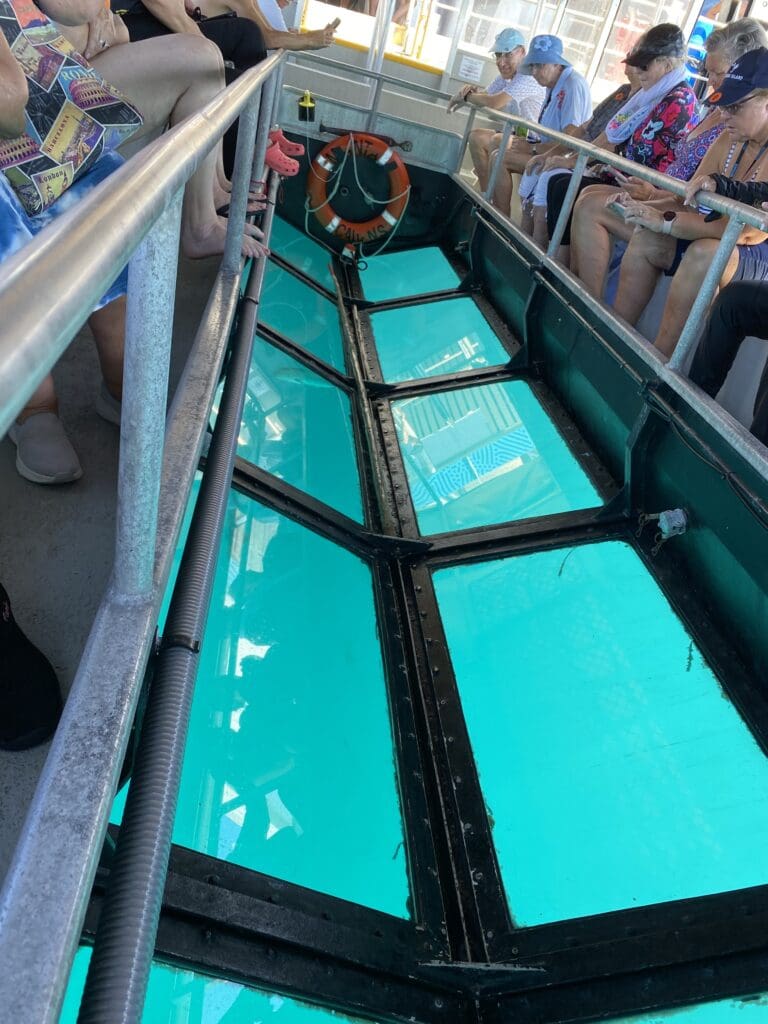
We saw giant Red Snappers, which are generally good eating. However, while they are plentiful here, because their diets are primarily critters that eat the coral, they will poison you if you eat them. (It seems like every exotic plant and animal in Australia is looking to kill people!)
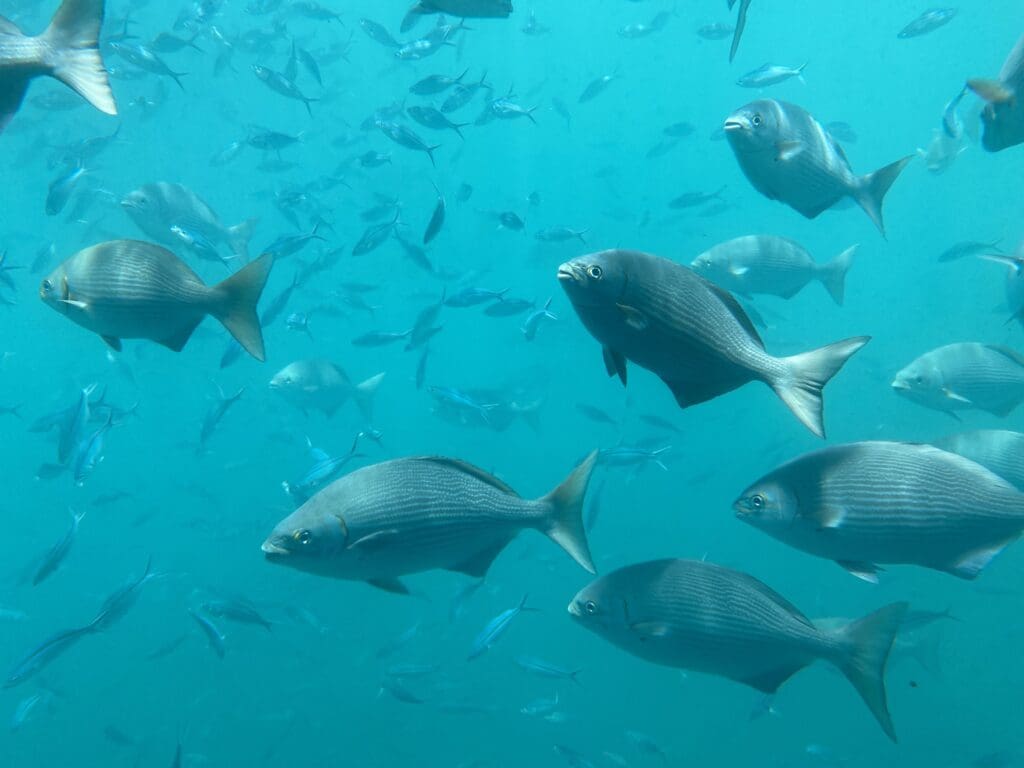
Speaking of eating, the food was outstanding on the platform. Lots to choose from, and yum-o-licious!
My favorite part of the platform was the snorkeling. I have to say, getting in and out of the water could not have been easier. They had a very wide area similar to a boat ramp that you sat on as you put on your flippers, etc. then slowly lowered your way (on your bottom) down the ramp until you are in the water. They also have several assistances wandering around to give you a hand.
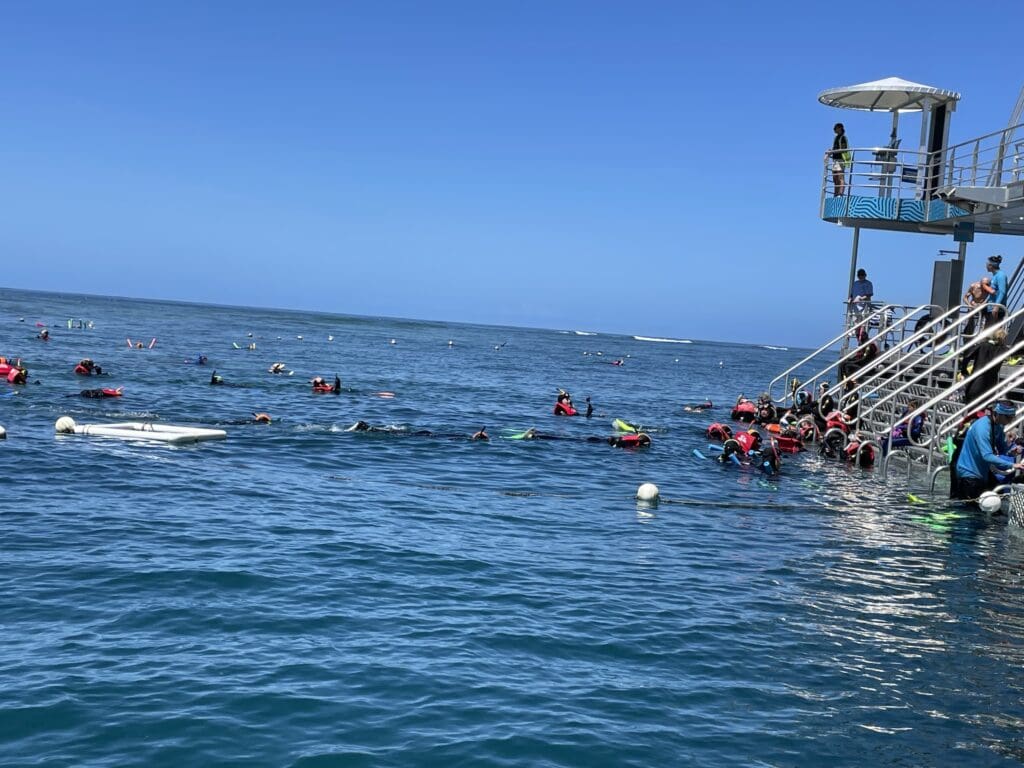
However, the downside was that it was jellyfish season, and we were required to wear a jellyfish suit. It pretty much looks like a scuba suit, but it is made of lightweight spandex like material. Oh, and yes, I saw jellyfish while I was snorkeling!
At any rate, the water was warm. The coral was beautiful, and the fish were incredibly colorful. Pretty much the best snorkeling I have ever done.
Okay, on to my favorite part. It’s time for “The Grass Is Brown on the Other Side Too”. Today’s subject is… wait for it…drunk turtles!
There are three types of turtles on the GBR, and as you can imagine, they tend to be rather large. One of their problematic neighbors is the pesky jellyfish. In fact, the Red jellyfish happened to be “in season” during our visit. These can be as large as a car and can actually kill humans. On my!
Our little buddy, Mr. Turtle, is immune, and they have figured out that they can eat jellyfish. However, as you can imagine, a jellyfish does not have very much to offer as a food source.
Researchers have figure out that, if a turtle eats enough jellyfish due to the jellyfish toxins, the turtles become intoxicated! When this happens, instead of displaying their normal behavior, the turtles go to the surface, and just kind of float around for the rest of the day. (You thought I was going to say a turtle walked into a sandbar, didn’t you…)
After snorkeling, we enjoyed several tasty local beverages before boarding the catamaran for the 70nm ride back to the ship. On the return ship we were treated to a didgeridoo performance. (And that is all that I am going to say about that…)
Okay, I have been tap-dancing around this for months. So, speaking of miles, did you know that in marine, air, and space navigation, measuring distance is in nautical miles (nm)?
One “statute” (or regular land) mile is equivalent to 1.151nm. So why would they waist so much time when both measurements are almost identical? Well, it turns out that when you are measuring large distance on a round planet, you must factor in the curvature of the earth, or your measurements get way off.
For example, we have traveled a little over 20,000nm on this trip so far, and it turns out that a cruise ship requires ~40 gallons of fuel per mile. Now, I do not know how much a gallon of fuel costs, but I would hate to be the guy that has to go to the boss and tell him he accidentally underestimated the fuel usage by 80,000 gallons because he used miles instead of nautical miles when running the calculation. Yikes!
Anyway, the interesting part of the story is, only three countries do not use the metric system. For us Americans, that works out great, as long as you only travel to Liberia, and Myanmar…
So instead of getting all hoity-toity regarding all of the reasons that the US should move to the metric system, I will simply ask this. Why isn’t it a nautical kilometer?
Well, go figure, the fine folks at Google knew the answer. It turns out that 1 nautical mile is actually 1 minute of latitude (and the word mile was used arbitrarily when the phrase was created?). And of course, if ones know their latitude and longitude, presumably, they know exactly where they are.
So what is a minute of latitude, and all this longitude business? Well, I will tell you my friends, but, that is another story…
Thank you for checking in.
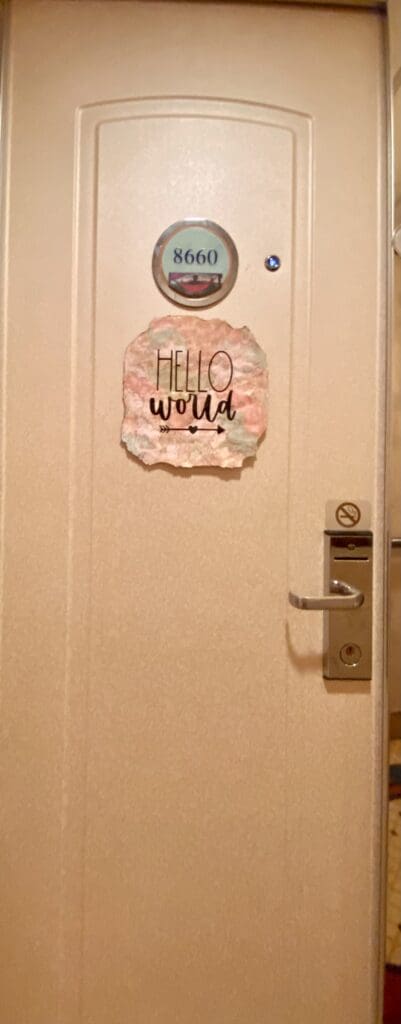
– Mike
“The world is merely a dream dreamt by god who is waking after a long sleep.” – Peter Carey, Author of “True History of the Kelly Gang”.
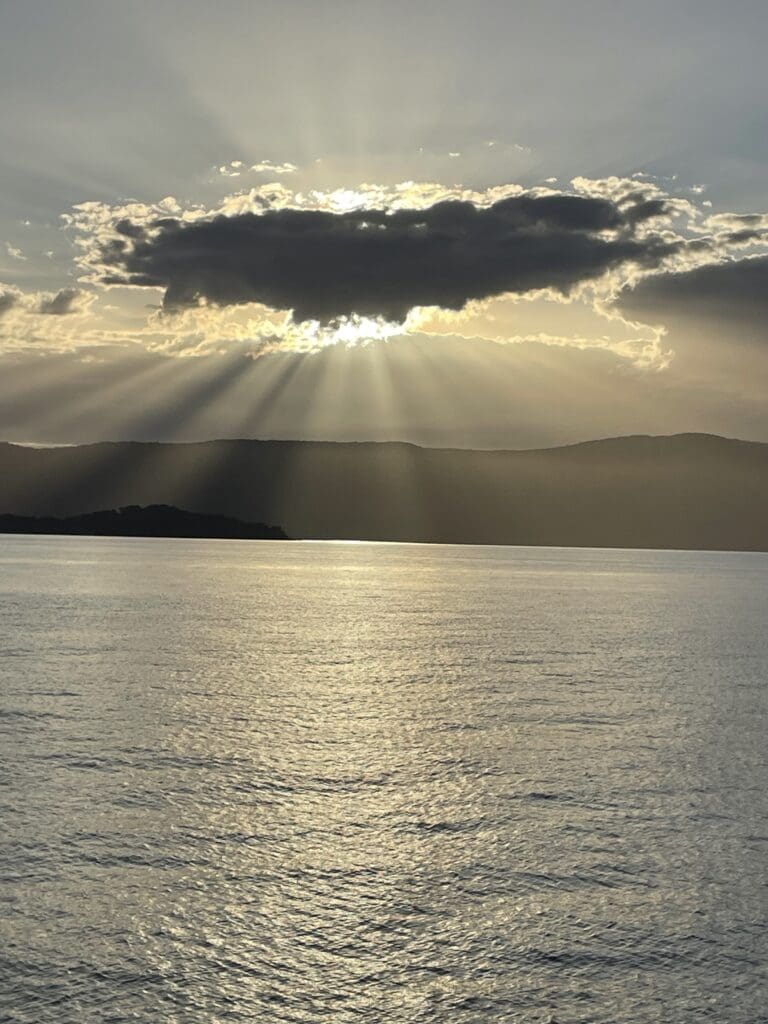

Recent Comments